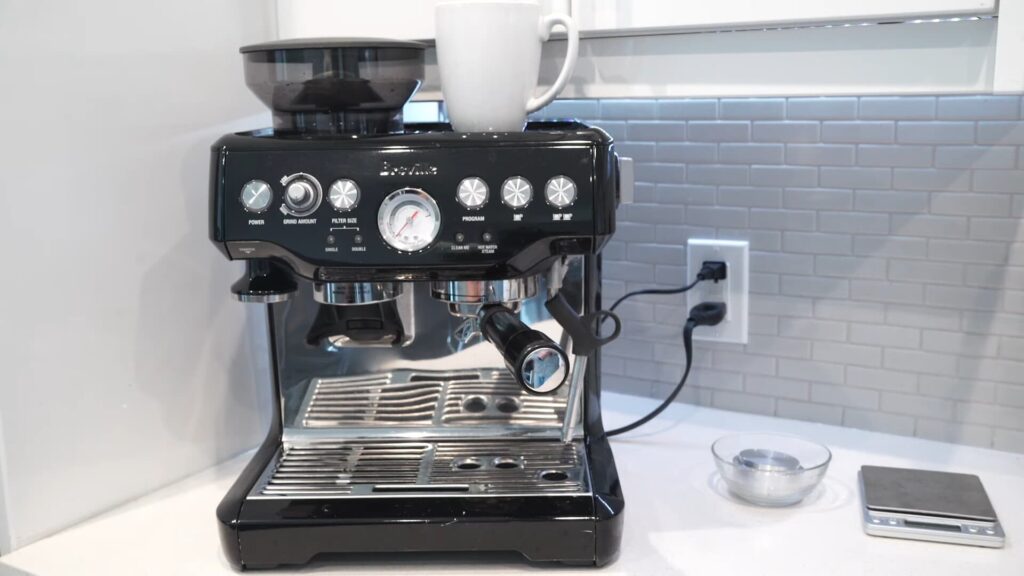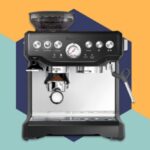Even if you regularly clean your coffee maker, you can eventually experience clogging problems. It might be annoying to clean your machine after each use, take the time to do a deeper clean once a month, and still have problems with the water flow and the quality of your coffee. If this has happened to you in the past, it may be time to descale your coffee machine.
We’ll show you how to descale your Breville coffee maker in this article. Before offering you step-by-step directions on how to descale your system, we’ll first go through how to determine if you need to. Even though it seems difficult, it’s really a quick operation that won’t take more than 30 minutes and might really enhance the flavor of your coffee.

How To Descale Your Breville Espresso Machine?
Breville makes a variety of coffee makers, such as drip coffee makers and espresso machines. A cleaning package including a brush, tablets, and cleaning disc is included with many of these items.
This tutorial will walk you through descaling Breville machines step-by-step using the Breville Barista Pro BES878.
It’s ready to start the descaling cycle when the DESCALE message appears on the LCD panel. After that, you may start cleaning by taking the subsequent actions.
1. Get everything ready before de-scaling by preparing the equipment.
Add a cleaning pill to the tank after removing the water filter from it. Place a bigger container beneath the brew head to store the descaling liquid and make sure the drip tray is empty.
2. Fill the water and descaler container with water.
The water tank should be filled up to the DESCALE line. If you’re using descaling powder, give it time to fully dissolve before adding the descaling agent.
3. Switch to DESCALE mode.
By tapping the Menu button, you may access the main menu. Select the DESCALE option by using the GRIND AMOUNT slider to travel there. Press the 1 CUP button when it illuminates to start the descaling cycle.
4. Complete the three-stage decaling-descale cycle.
Three parts make up the descale cycle: coffee, hot water, and steam. There will be a buzzer after each step is finished. The steam dial on the right has to be turned to either the hot water or steam position during the hot water and steam stages. To decide where it needs to be positioned, simply follow the on-screen directions.
5. Start the rinsing process.
The 1 CUP button will flash to signal the start of the rinse cycle after the descale cycle is finished. Fill the water tank with fresh water until the Max line is reached after emptying the tank.
6. Complete the three-stage rinsing process.
To start the rinse cycle, press the 1 CUP button. Then, proceed as directed above for the descale cycle.
7. The descaler has finished.
The machine will return to its initial ready state when the rinse cycle is finished.
Read More:
- How to Clean a Breville Espresso Machine In Simple Ways
- How to Setup & Use a Breville Espresso Machine?
Why Should I Descale My Breville Espresso Machine?
Descaling is an often-overlooked maintenance procedure, but it should not be as it will unquestionably increase the lifespan of your espresso machine.
The coffee maker accumulates minerals with repeated usage. Chalk and limestone get bonded to the internal working parts as a result. Over time, your machine’s performance will decline if you don’t fix the issue.
These build-ups can result in a variety of problems, such as inconsistent brewing temperature and ineffective boiler heating. This in turn may have an impact on the crucial coffee taste. In addition, the scale may separate and begin to affect other components of the machine or block its pipes. don’t be surprised if a hefty repair bill is soon heading your way.
The good news is that a little descaling from time to time can stop those issues before they start, ensuring gorgeous coffee time and again.
How to Determine If Your Coffee Maker Needs to Be Descaled
Hard water might be the problem if you routinely clean your coffee maker but you still experience problems with water flow. Hard water is defined as having a high concentration of minerals, primarily calcium and magnesium. The simplest approach to determine if you reside in a region with hard water is to look at the drains in your tub and sink. You may test your water with a pool or spa test or a hard water test kit. It’s a good sign that you have hard water if you notice a white residue around the drains.
Although drinking hard water is not harmful, it can clog coffee makers and needs extra attention to be removed. Regular cleaning with coffee maker cleaning tablets or using soap and water on removable parts won’t work. To remove these mineral deposits, you need to descale your machine.
Advice
There are various more simple and efficient techniques to get rid of the buildup of used coffee grounds and oils in addition to the significance of backflushing and descaling. Let’s look at the top:
- Start by making it a habit to flush the group head with some boiler water in between each espresso shot. By doing this, the filter screen’s clogged-up grounds will be removed. This will guarantee that each shot of coffee you make is made with fresh grounds rather than stale ones.
- Always clean the top edge of the filter basket and wipe it between espresso shots. If coffee grinds are left on the top edge of the filter basket, they will ultimately push against the rubber seal on the group head, wearing it out far sooner than is required.
- After steaming milk with the steam wand, always wipe off any leftover milk. Any remaining milk will solidify over time and become more difficult to remove. However, a quick wash down with a moist cloth after each usage will prevent it from ever accumulating.
- If your Breville espresso machine has a grinder, remember to routinely clean the bean hopper and burr set so that the grinder can more effectively ground coffee beans. Keep in mind to clear the drip tray after each usage and to clean the coffee grind bin.
These straightforward upkeep techniques might not each appear very significant. However, when combined, they have a big impact on the coffee’s overall flavor, making them quick and simple practices that are worthwhile. Why spend money on an espresso machine that can make beautiful coffee if you don’t follow basic maintenance procedures to preserve the flavor?
Conclusion
Your coffee maker has to be correctly and routinely maintained, just like the majority of gear, to remain in top condition. Additionally, frequent maintenance can assist guarantee that every cup of coffee your machine makes is as pleasurable as the one before it, whether it be through somewhat more complicated methods like descaling or simply a simple wipe of the steam wand after each use.
However, because deterioration often occurs gradually, it might be simple to postpone a variety of straightforward maintenance procedures for a later time. However, if you make it a habit of frequently cleaning and descaling your Breville espresso machine, you may continue to enjoy the top-notch coffees the company’s goods are known for. Additionally, you’ll significantly lengthen the machine’s lifespan.
As a result, you will experience significantly fewer exorbitant repair costs or, worse yet, the necessity to purchase a replacement equipment earlier than you should have. Instead, you’ll be able to savor a spotless, fully functional machine that regularly makes lovely coffee.











